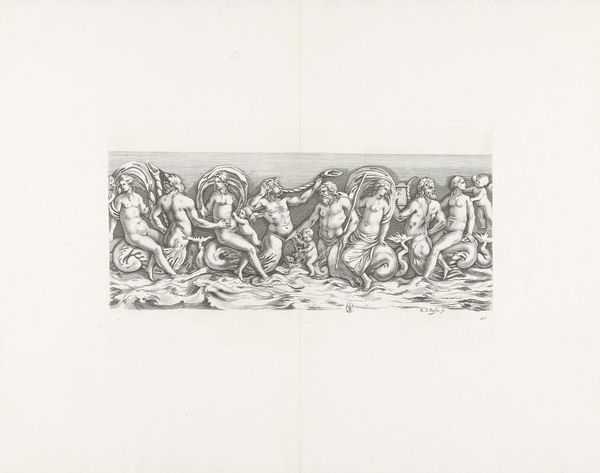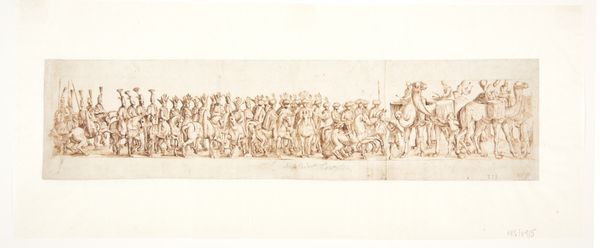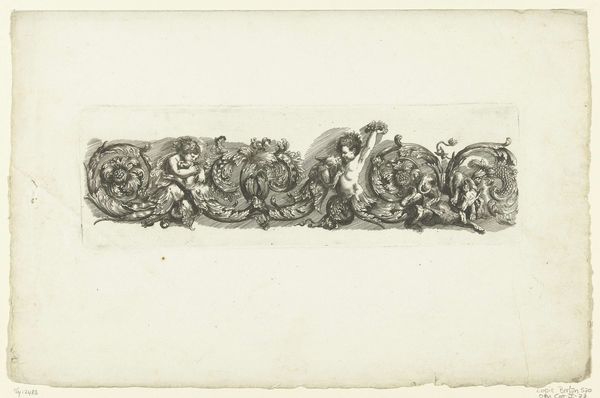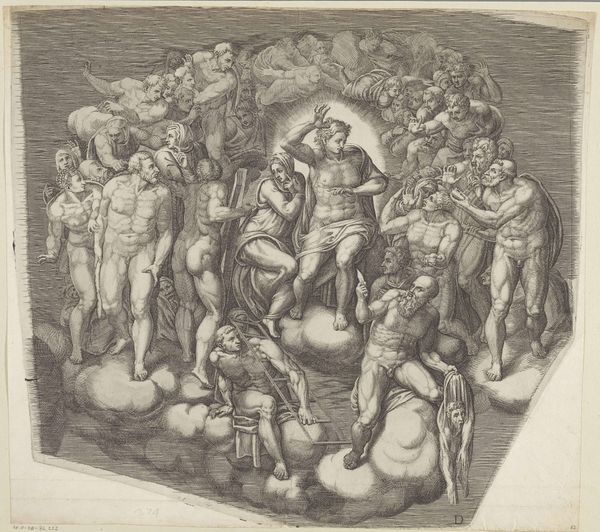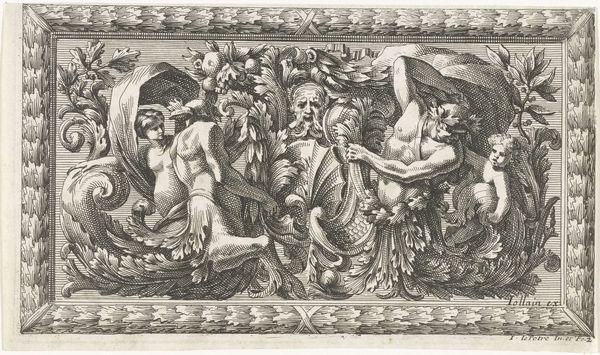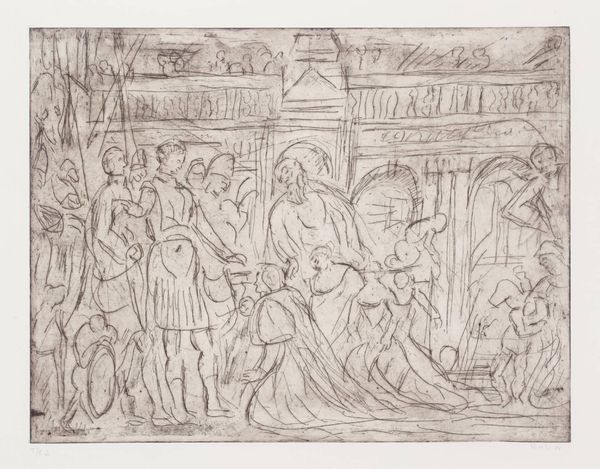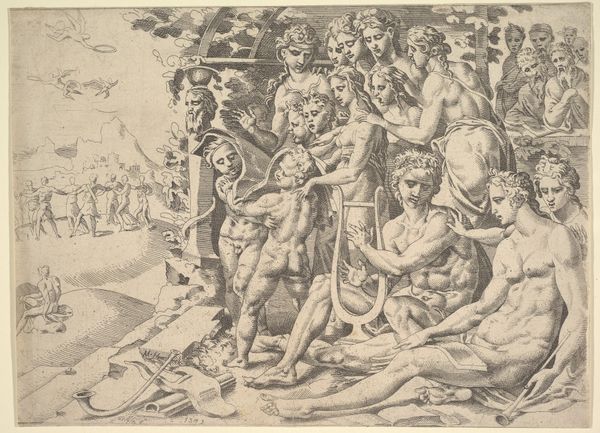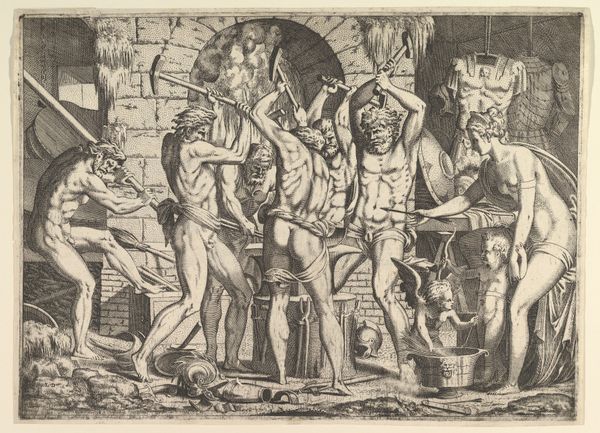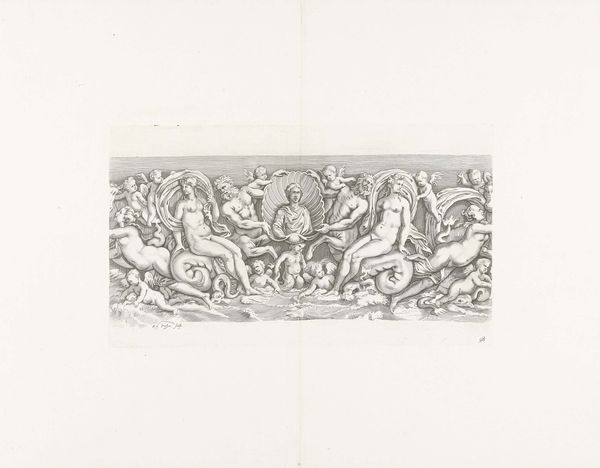
engraving
#
portrait
#
allegory
#
baroque
#
figuration
#
group-portraits
#
history-painting
#
northern-renaissance
#
academic-art
#
engraving
Dimensions: height 237 mm, width 369 mm
Copyright: Rijks Museum: Open Domain
Reinier van Persijn created this bas-relief of putti, cherubic figures, sometime before 1668. These putti carry symbolic objects and a portrait, alluding to classical themes. The image of putti is deeply rooted in antiquity, symbolizing love and innocence, often appearing in Roman art as representations of Cupid. Consider their recurrence through the Renaissance, where they were revived, often adorning paintings with religious or mythological scenes. Think of Raphael's cherubs in the "Sistine Madonna"; their innocent gaze, heavy with implications of divine love, echoes through the ages. Notice the central portrait held aloft by these figures, a celebration of the individual framed by timeless symbols of purity and affection. It’s a fascinating blend, where classical motifs are reborn, carrying forward echoes of the past into Persijn’s present. A testament to how symbols migrate, adapt, and eternally engage our collective psyche.
Comments
No comments
Be the first to comment and join the conversation on the ultimate creative platform.
